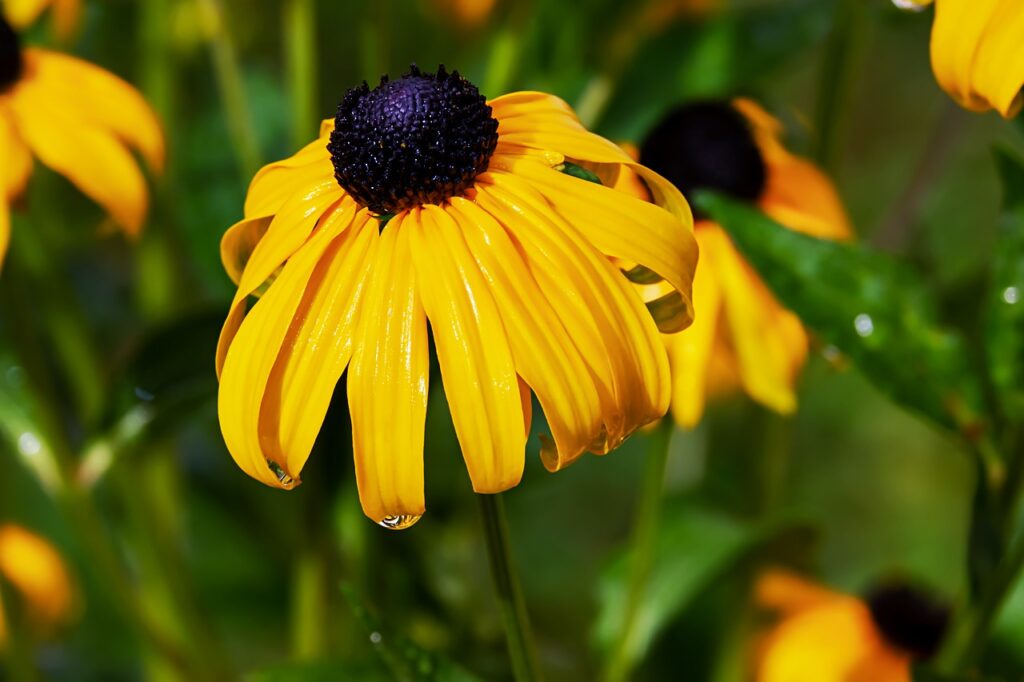This year, we have seen a variety of strange weather phenomena. Thankfully, for those experiencing more rain than usual, there are ways to help reduce any localized flooding or standing water issues that have popped up; one great way is to create a rain garden.
The Rain Garden
Rain gardens are planted on low spots of the landscape and work similarly to a retention pond. The garden will collect water runoff, allowing it to drain into the soil.
However, rather than using flood-tolerant plants like you would for a retention pond, the rain garden works best with native plants.
Why Native Plants?
Not only are native plants best adapted for the local environment and moisture conditions, but approximately 80% of a native plant’s mass is underground. Because of this, the native plant is more capable of trapping and filtering runoff water.

Care
There is a lot less maintenance that needs to be performed on a rain garden than a typical flowerbed. Here are some important things to remember from Jaime McIntosh TheSpruce.com when caring for this kind of garden.
During times of drought, help encourage healthy growth by watering the garden deeply and infrequently.
Keep the garden weed-free. To do this, first, make sure to weed the garden after it rains; this is when the soil is softened, allowing the roots of the weeds to be pulled more easily.
Additionally, it is a good idea to place a three-inch layer of mulch in the garden to suppress weeds—just make sure to use a fine hardwood mulch to prevent it from floating away after heavy rains.
Choosing Plants
Need help choosing plants for the garden? Look no further!
The most important thing to remember is that all plants planted in the garden should be perennials. Perennial plants have deeper roots, allowing the garden to function properly while also helping with runoff water reduction.
Additionally, make sure to put plants that thrive in more moist conditions in the center of the garden. A few examples include the coneflower, hardy hibiscus, or the black-eyed Susan.
Along the outside of the garden, make sure to place plants that do not need moist soil to thrive. Plants like butterfly weed and catmint are great for lining the edge of a rain garden as they do not mind occasional periods of drought.
Overall, a rain garden is a great way to help ensure your landscape remains beautiful while also helping the local environment.
